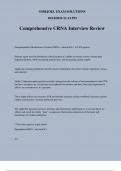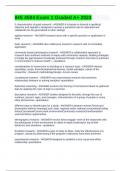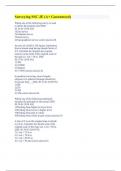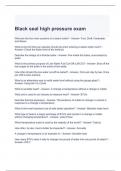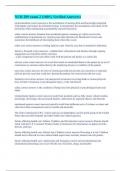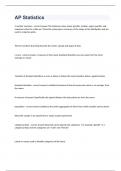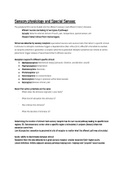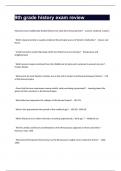Exam (elaborations)
Comprehensive CRNA Interview Review
- Course
- Institution
Comprehensive CRNA Interview Review Norepinephrine Mechanism of Action (MOA) - answerA1, A2, B1 agonist. Primary agent used in distributive shock because it's ability to recruit venous volume and augment preload, while increasing arterial tone, and increasing cardiac output. Alpha one causing p...
[Show more]
